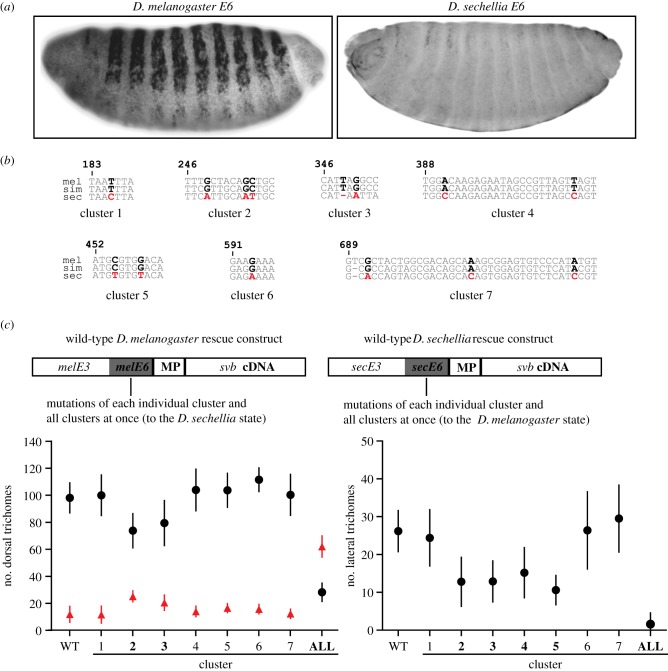Figure 4.
Genetic changes underlying the evolution of enhancer E6 in D. sechellia. (a) Lateral view of the expression driven by enhancer E6 from D. melanogaster and D. sechellia in stage 15 embryos of D. melanogaster. (b) Selected regions of the full-length alignment of D. melanogaster (mel), D. sechellia (sec) and D. simulans (sim) E6 enhancer that include the seven clusters of sites uniquely derived in D. sechellia E6 (marked in bold). These sites were mutated in the rescue constructs depicted in (c). (c) Scheme of the constructs used to test the effects of mutations (above). Number of trichomes produced by E6 variants in a svb null background (graphs below). Number of trichomes rescued by the D. melanogaster (circles) and D. sechellia (triangles) constructs in the dorsal (left) and lateral (right) regions of the cuticle. Circles and triangles denote the mean number of trichomes. Vertical lines represent ± 1s.d. (n = 10). Larvae carrying D. sechellia rescue constructs produced zero trichomes in the lateral region and are not shown in the figure on the right. WT, wild-type construct. ALL, construct with all clusters mutated. Clusters highlighted in bold (x-axis) caused a significant change in the number of trichomes produced compared with the wild-type construct. (Online version in colour.)

